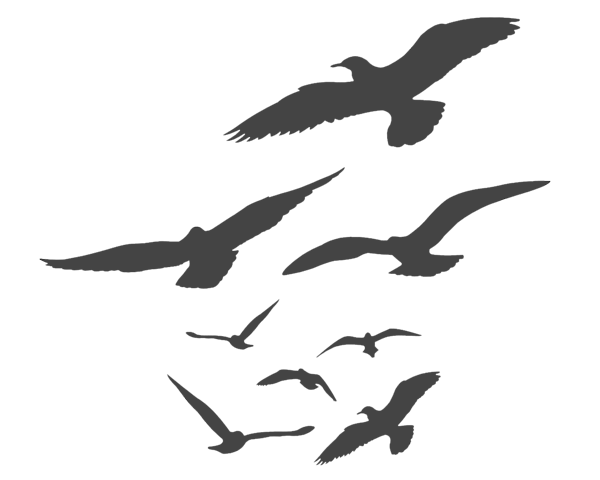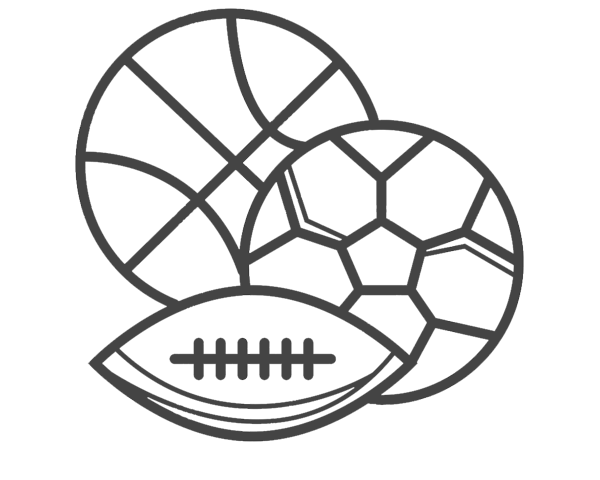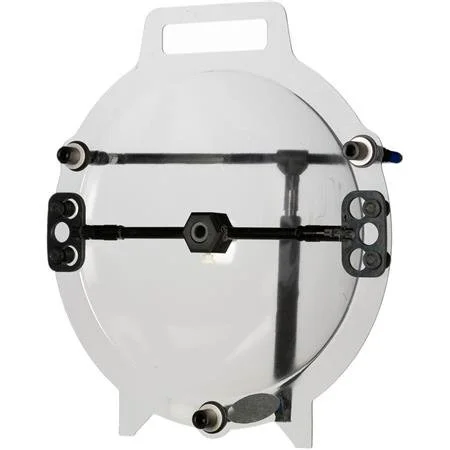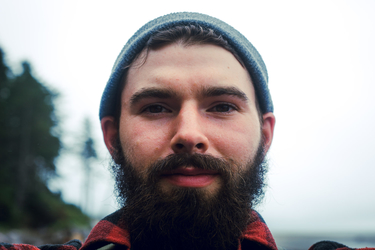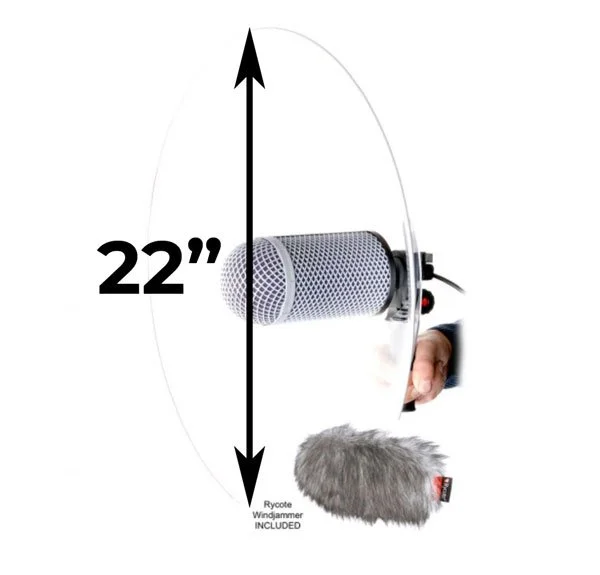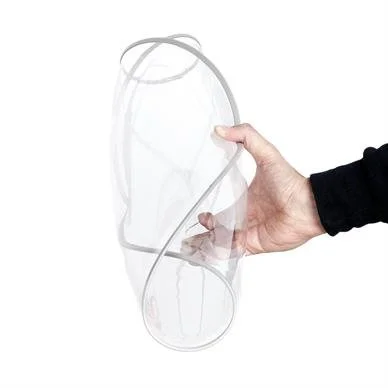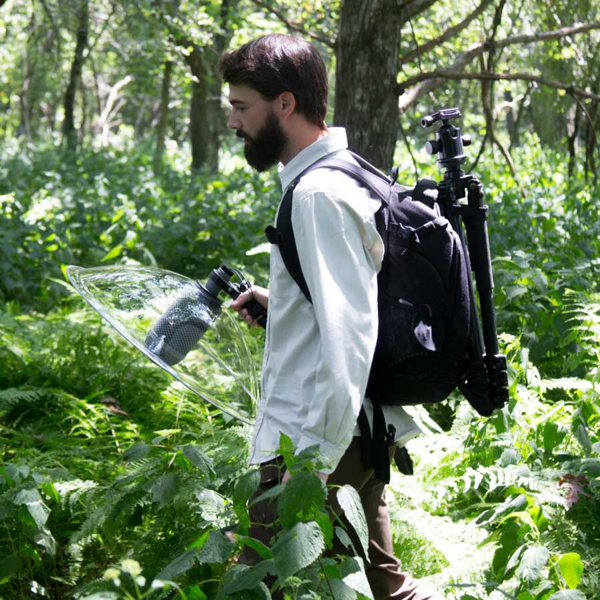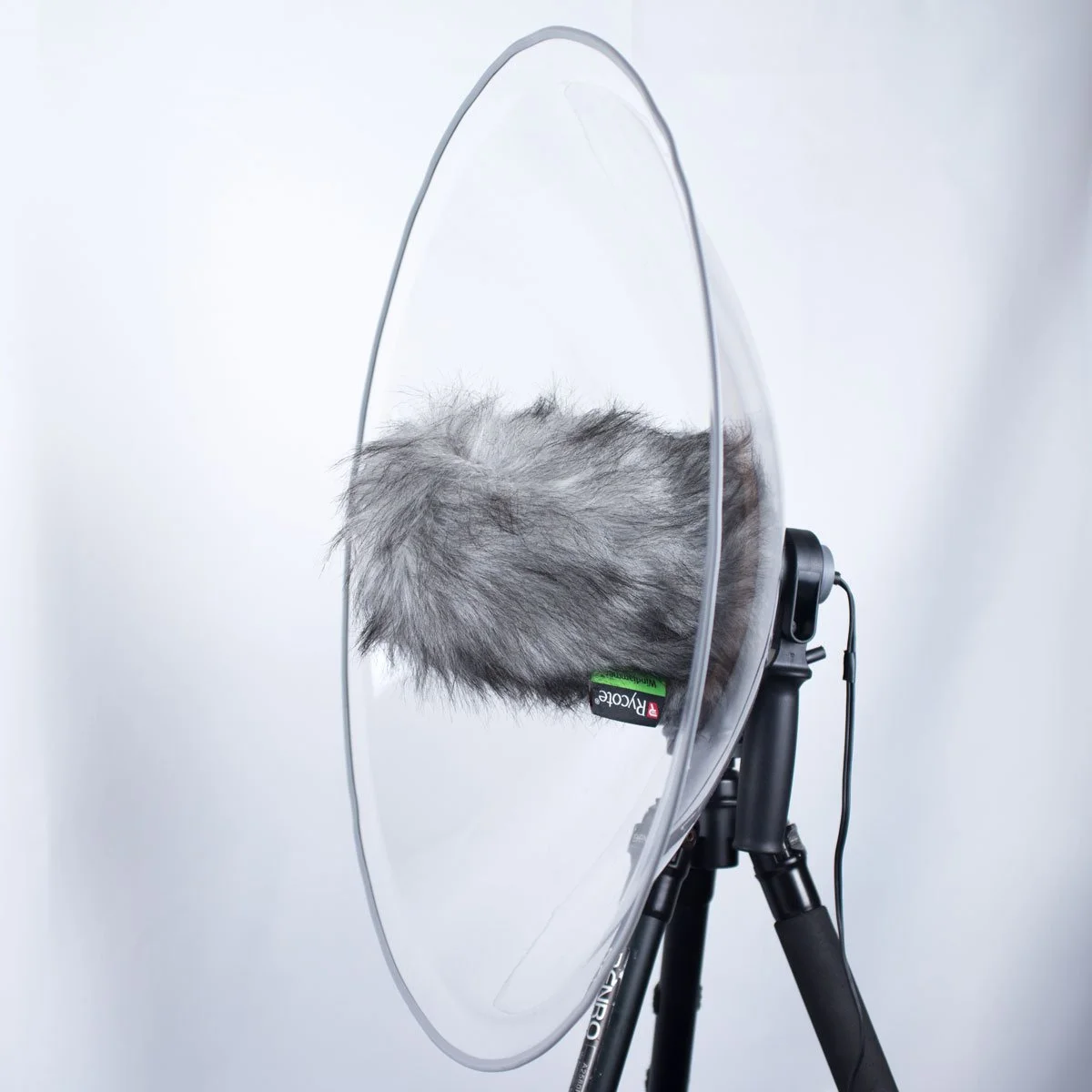Best Parabolic Microphone | For Birding & Football
Professional advice on how to choose the best parabolic microphone for birding or live sports.
A parabolic microphone is the best tool for recording and isolating sounds at a distance.
They’re most commonly used for recording wildlife species vocalizations and the sounds of athletes at sporting events.
As a professional nature field recordist, I use parabolic microphones to capture incredibly detailed sounds of bird songs and other wildlife.
Whatever your interest is in parabolic microphones, you’ll find the best recommendations for your use in this article.
You’ll also learn about how parabolic microphones work, and important features to consider before purchasing.
Best Parabolic Microphones
To help you find the best parabolic microphone for your needs, I’ve sorted my recommendations into two categories:
Parabolic Microphones for Birding (and other wildlife)
Parabolic Microphones for Football (and other sports)
Best Parabolic Microphones for Birding
The best parabolic microphone for birding is:
low self noise - bird sounds are quiet and need equally quiet microphones to avoid distracting, background hiss in the recording.
lightweight - with birders “hunting” on foot in search of their species, a lightweight parabolic mic will make trekking through the woods easier and more enjoyable.
foldable - a folding parabolic dish is a great feature for compact travel.
Below you’ll find my recommendations for the best parabolic mics for recording bird song and other wildlife species.
Most Affordable Parabolic Microphone for Birding (mics included)
The Wildtronics Pro Mono is the most affordable parabolic microphone recommended for birding and other wildlife species.
Although it’s the cheapest parabolic mic on this list, it still has an awesome feature set including:
ultra low noise microphones
bendable, clear, 22” dish (the optional Featherlight dish is foldable)
foam grip handle - reduces handling noise
integral 1/4”-20 threads - easy tripod mounting
XLR or 3.5mm output
9v battery or phantom power
windshield included - rated for 12-15 mph winds
ultralight
Bottom Line: The Wildtronics Pro Mono offers incredible value for its price. With the included, ultra low noise mics, the Pro Mono is ready to use out of the box with any field recorder.
The ability to power the Pro Mono with a 9v battery and 3.5mm output allows for high quality recordings with entry-level field recorders like the Zoom H1n. This makes the Pro Mono a great choice for beginner birders.
*A stereo version of this microphone is available here. It features two, forward-facing microphones, shielded from focal point of the dish to add a spacious stereo ambience to the highlighted subject in focus.
Pros
- Affordable
- Ultralight
- Ultra low noise
- Optional folding dish
- Windshield included
Cons
- Mono
Best Overall Parabolic Microphone for Birding (mics not included)
The Telinga Modular is the most advanced and best overall parabolic microphone for birding and other wildlife species.
The Modular does not include any microphones. Instead, it is designed to be used with virtually any microphone you already own.
This makes the Modular incredibly versatile, as you can freely swap out the microphones for different frequency responses or mono/stereo arrangements.
Features that make the Telinga Modular best-in-class include:
22”, foldable, clear dish
mono and stereo foam cartridges included - accepts pencil style condenser microphones up to 180mm in length and 24mm in width
Rycote blimp windshield
Rycote furry windjammer
Robust handle with integrated cable management
Bottom Line: The Telinga Modular is the best built parabolic microphone available and will work with virtually any condenser microphone. It’s ultralight and fast and easy to set up in the field with no tools required.
This is the parabolic microphone that I use. For microphones, I use two Primo EM272 capsules with the stereo cartridge. Self noise is non-existent and the mics only cost about $50. With the Rycote blimp, I’ve never had an issue with wind noise, even without the furry windjammer in 20mph gusts.
The only downside to the Modular is the tripod mounting plate is not included, however, while wearing padded gloves, handling noise is only an issue for long takes when my hand gets tired.
Pros
- Build quality
- Ultralight
- Mono or stereo
- Folding dish
- Rycote blimp windshield
Cons
- Expensive
- Tripod mount not included
Best Parabolic Microphones for Football
The best parabolic microphone for football and other sports is:
lightweight - help reduce fatigue.
neck strap - spread the weight across your body for effortless, full-game recording.
tough - must be able to take an impact from a player or ball.
Below you’ll find my recommendations of the best parabolic microphones for football and other sports.
Most Affordable Parabolic Microphone for Football
The Sound Shark SS1 is the cheapest parabolic microphone for recording sporting events.
The small, 9” dish is compact for traveling and works best at distances between 30-50’.
With the integrated 1/4”-20 threaded socket, the Sound Shark is an excellent choice for casual recording of local sporting events on a tripod or monopod.
Designed for lavalier microphones (not included), the Sound Shark performs best with an omnidirectional mic.
Bottom Line: The Sound Shark SS1-ACC is a small, entry-level parabolic microphone that works best at shorter distances up to 50’. It’s ultralight, compact, and has an optional hot shoe mount for videographers.
Pros
- Affordable
- Compact
- Tripod compatible
Cons
- Short working distance
- Mics not included
Best Value Parabolic Microphone for Football
The Klover MiK-16 V2 parabolic microphone offers the best bang for your buck.
The mid-sized, 16” parabolic dish is robustly built and will withstand the rigors of covering action sports with ease.
At this size, the MiK-16 V2 can capture detailed sounds up to 200’ away.
The dish accepts condenser or lavalier microphones up to 20mm in diameter (not included).
With dual, padded handles and the option to add a neck strap, the MiK-16 V2 is designed for long hours of use with ease.
The weight of the dish is lightweight (about 2 pounds), also helping to reduce fatigue.
Bottom Line: Klover makes the highest quality parabolic microphones and this mid-tier model is great for recording sporting events up to 200’ away. Positioned in the middle of the field, you should be able to capture detailed, on-field audio for the entire game. The only room for improvement would be to add dedicated mounting options for securing a wireless transmitter.
Pros
- Great value
- Lightweight
- Dual, padded handles
Cons
- No space for mounting accessories
- Mics not included
Best Overall Parabolic Microphone for Football
The Klover MiK 26 is the premier option for recording on-field audio at football games and other sporting events.
The large, 26” parabolic dish is extremely durable and its size allows you to capture detailed audio up to 600’ away!
The dual padded handles and included neck strap allow for comfortable use over long recording sessions, despite the heavy weight of the beastly dish (7.5 lbs).
The mic yoke accepts condenser or lavalier microphones up to 20mm in diameter.
The dish and handles have several mounting holes for holding wireless transmitters, recorders, and headphone amps.
Bottom Line: The Klover MiK 26 is found at every NFL game for a reason; it’s the best. With its huge dish capable of capturing crisp sonic details up to 600’ away, there’s no sound beyond its reach at any sporting event. Customization is easy with the plethora of mounting holes for holding gear and accessories. However, this kind of quality does not come cheap.
Pros
- Extreme range
- Included neck strap
- Mounting holes for customization
Cons
- Expensive
- Heavy
Why You Should Trust Us
Hi, I’m Jared Blake, a professional audio engineer.
Recording nature and wildlife sounds is my niche and I’ve used parabolic microphones extensively throughout my career.
I’m an owner of the Telinga Modular and believe it’s the best parabolic mic for capturing the sounds of nature.
Please have a listen to my favorite recording made with the Modular below.
As a consumer, I don’t like to waste money on inferior products and am usually willing to splurge for “the best”. I’d much rather have a high quality product that will last for years to come than something that might work in a pinch, but break a week later.
Having said that, I always weigh cost against features and do the research to find products that outperform their price tag.
FAQ
-
Parabolic microphones harness the geometric powers of a parabolic curve into a three-dimensional shape, known as a parabolic dish.
A parabolic dish is able to concentrate all incoming waves parallel to the dish (sound, solar, radio) into a single point.
This makes parabolic dishes the most powerful shape for collecting and concentrating information at a distance.
Microphones, satellites, and solar collectors all use this shape to concentrate various forms of energy.
-
Yes, parabolic microphones are truly capable of capturing, isolating, and amplifying sound waves at great distances.
Larger diameter parabolic dishes can capture information from further away; from 26” wide microphone dishes that capture sound up to 600’ away, to 300’ wide satellites that capture information 25,000 light years away.
-
Parabolic microphones are used for capturing, isolating, and amplifying sounds at great distances.
Without a parabolic microphone, those sounds would be very faint or entirely mute to the human ear.
They’re most commonly used for recording wildlife species and on-field audio during sporting events, but they’re also used in surveillance and law enforcement operations to hear conversations at a distance.
-
The working distance of a parabolic microphone depends on its diameter.
The bigger the parabolic dish, the further away it can hear.
Parabolic dishes range in diameter from 9” (works up to 50’ away), to 300’ (works up to 25,000 light years away).
-
If you’ve watched enough football, you’ve probably wondered what that huge, concave, clear thing you saw someone holding on the sidelines and pointing at the players.
That was a parabolic microphone.
Parabolic microphones are used in football games and other sporting events to capture detailed, live audio of the athletes on the field.
The audio is mixed into the live broadcast and adds a lot of sonic interest to the viewers at home.
The enhanced audio details make watching sound more intense and bring you closer to the action.
Important Features to Consider
Before purchasing a parabolic microphone for any purpose, there are several important features to consider.
By fully understanding the following features, you’ll learn exactly what factors are most important to your work, and can select a parabolic microphone that meets your requirements.
Dish Diameter
The Telinga Modular has a dish diameter of 22”.
Parabolic dish diameter is perhaps the most important feature to consider before purchasing, as it will determine the working distance of the parabolic microphone.
Due to the many variables that go into this calculation, the working distance does not solely rely on the diameter of the dish.
However, a general guide is as follows:
12” diameter - works up to 50’ away from a subject
24” diameter - works up to 600’ away from a subject
300’ diameter - works up to 25,000 light years away from a subject
Small diameter parabolic microphones are great for capturing the sounds of close wildlife and some sporting events.
Medium diameter parabolic microphones are great for capturing the sounds of distant wildlife and all sporting events.
Large diameter parabolic microphones are impractical to use for sound recording and are instead used to collect and concentrate radio waves from distant galaxies.
Foldable Dishes
Some parabolic microphones feature a foldable dish.
This allows them to be rolled up for short storage during travel.
Dishes should not be stored folded for more than 48 hours. This allows them to bounce back into perfect shape and retain their efficiency. After storing, let your parabolic dish sit on a flat surface for 24 hours to regain its shape.
Foldable dishes are great for birders and wildlife recordists who travel or hike to their destinations.
Since parabolic microphones can be awkward to carry, the ability to roll up the dish and lash it to your pack is a great quality-of-life advantage.
Foldable dishes lack the durability required of professional sports recording, and is why parabolic microphones of that sort are extremely robust and rigid.
Weight
For birders and wildlife recordists, weight is extremely important, even if you plan to use your parabolic microphone on a tripod or monopod.
Before you find your subject, you’ll have to carry your parabolic dish (either in hand or in your pack), and a heavy set up can drain your energy.
This is why most parabolic microphones for wildlife recording are ultralight, weighing no more than two pounds.
The weight of heavier parabolic microphones built to withstand the rigors of live sports recording is offset by dual handles and neck straps to help distribute the weight across the body.
Wind Protection
Regardless of how you plan to use your parabolic microphone, wind protection is an absolute must.
Though the parabolic dish does a good job of shielding the microphone from off-axis wind, any gusts that enter the dish directly will overload the microphone, causing distortion.
To overcome this problem, most manufacturers offer wind protection solutions for their specific parabolic microphone models.
Telinga is one such manufacturer, offering a blimp, furry windshield, and drawstring felt covering that spans the entire width of the parabolic dish.
If your parabolic microphone manufacturer does not offer any wind protection solutions, simply order a furry windscreen that will fit the diameter of your microphone.
Mounting Options
Wireless transmitter, headphones, and recorder mounted on the Klover MiK 26.
Having the ability to mount gear and accessories on your parabolic dish can help with efficiency, especially for live sports recordists.
The best parabolic microphones for this purpose will have predrilled holes around the rim of the parabolic dish for custom mounting options.
Since your hands will be tied up with holding the dish, it can be nice to visually see your recorder and wireless transmitters to confirm they are working.
Also, should you have to make an adjustment, you can use one hand and the neck support strap to support the dish while you use your other to attend to your accessories.
Support Acoustic Nature
If you enjoyed this post and would like to help support Acoustic Nature, please consider "buying me a coffee" or becoming a Patreon with the buttons below.
As a thank you for your support, Patreon supporters receive a copy of Field Recording For Beginners, exclusive access to the full Behind The Sounds video series, nature sound library downloads, and more.
If you are unable to support the site financially, please share this post with others, or leave a comment below letting me know you enjoyed this post! Both are free and help the website grow. Thank you ♫
Thanks for reading,
-Jared


